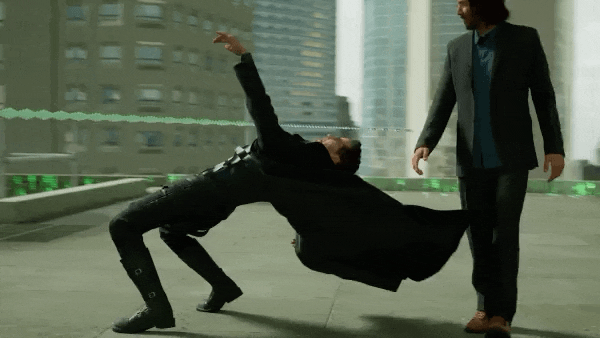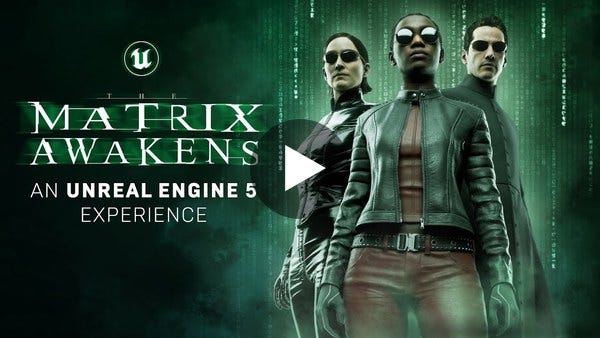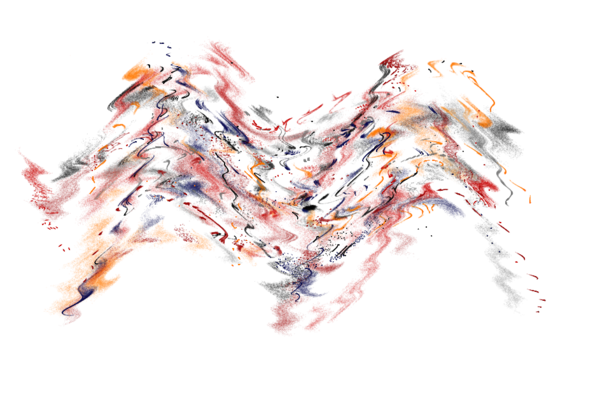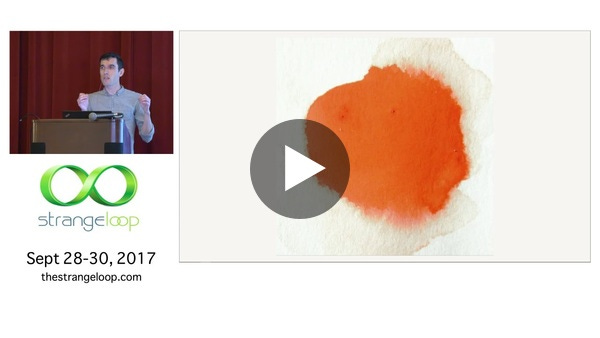Bi-Weekly-ish newsletter of Marcel A. Wiebenga - Issue #10
Marcel Alexander Wiebenga
Dear reader,
From an Amsterdam, in lockdown, I’d like to give you all my best wishes in an age of quarrel. May 2022 meet all your needs, and may we all be healthy and kicking this whole Covid thing into oblivion.
Due to a server error at Revue, the last edition of this “Bi-Weekly Newsletter about Music, Tech, Advertising, More Music, Culture, and even more Music” was not delivered. I’m assuming this won’t happen this time around. In case you didn’t get edition it, here’s the previous edition.
The 10th edition of this newsletter includes a must-see tech demo promoting the new The Matrix movie, a fantastic interview with one of my favorite writers Yuval Noah Harari and some ideas on NFTs and art.
Glad to be back! Looking forward to 2022! Have a great Friday!

Only a simulated human can dodge a bullet at close range.
1. The Matrix / Unreal 5 demo is a must-see boundary-pushing rtech demo.
As part of the promotion campaign for the upcoming The Matrix 4 movie, the film’s producers, together with Epic Games, released “The Matrix Awakens: An Unreal Engine 5 experience”. This experience is a demo for PS5 and Xbox. It showcases the capabilities of the latest version of the game engine that proves to be a quantum leap forward in terms of graphics, a leap many gamers have been anxiously waiting for. If you’re like me and don’t have access to a next-gen game console (damn you covid and your subsequent lack of chip production!), you can view part of the demo in the YouTube video linked below.
The demo kicks off with an animated version of Keanu Reeves looking at the past and present of The Matrix, offering a speech on how mixing digital and real worlds has always been the central pillar of the Matrix story. Meanwhile, the demo showcases that Unreal 5’s capabilities are getting awkwardly close to realism in environments, lighting and is closing the gap between real Keanu and computer-generated Keanu.
This demo showcases we’re getting closer to a digital world that is inseparable from the real world, meaning that all of this could just as well be a simulation. I don’t know about you, but I am completely ok with that.
Check out below to see where we are in that process.

The Matrix Awakens: An Unreal Engine 5 Experience
2. Winter guests with Yuval Noah Harari.
“Winter guests” is the winter equivalent of a Dutch tv show called, you guessed it: “Summer guests”! I’m not sure this format exists in other countries, so allow me to explain: Summer / Winter guests is a TV show that consists of an in-depth interview based around cinema, news, television, or documentary footage curated by the guest. The first episode features the Israeli superstar of modern thinking, Yuval Noah Harari.
In his book Sapiens, Harari’s main argument is that Sapiens (you, me, we, everybody!) came to dominate this planet because we are the only animal that can cooperate flexibly in large numbers. Sapiens have the ability to tell stories and consequently create myths and build belief systems. This central idea is woven throughout the episode; for example, through the myth of money (The Big Short), conspiracy theory myths, the concept of free will (Disney’s Inside Out), the history of man (Once Upon A Time… Man), and historical inaccuracies in Game Of Thrones.
This 90-minute interview explains his sometimes complicated ideas in easy-to-understand language and makes you look differently at a lot of the footage you’ve seen before. Online for the time being below, back up download here.
Yuval Noah Harari gemist? Start met kijken op NPO Start

The one NFT I own, make me an offer I can't refuse on Opensea.io.
3. NFTs and the traditional fine art market.
After the last edition of this newsletter that I sent out, someone responded that I was adding to the biggest scam in history because I am talking about NFTs like they have value. Building on the ideas from Yuval Harari, the first part of this statement is undoubtedly true. By discussing and perhaps enthusiastically putting the concept of NFT art and collectibles out there through this newsletter, I take part in the myth creation of the NFT phenomenon by default. I doubt however that NFT are the biggest scam in history.
I consider NFTs a hype! According to this recent South Park episode and Gartner’s Hype Cycle, their value and potential are currently peak inflated, and a correction towards their actual value and potential is imminent. Compared to the traditional fine art market; the NFT-art and collectibles market is equally manipulated and highly exclusive, and one could argue that that is indeed a scam.
All in all. I am most excited (apparently, I should say bullish) about the general potential of Web3, the web of ownership and decentralization, not so much about art or collectible apes, but decentralized financial opportunities. I couldn’t do a near-perfect job explaining what they are, but luckily there’s a 30-minute podcast that I’d highly recommend. Check it out below.
Everything You Need to Know About DeFi and Crypto explained - Impact Theory with Tom Bilyeu

Tyler Hobbs, Fidenza and the smile of a person that just got payed!
4. Generative art: Code goes in, art comes out!
Talking about people making a lot of money selling art on Web3, I’ve been obsessing over generative art, especially the work, presentations, and words of Tyler Hobbs, the mastermind behind Fidenza. This exceptionally popular generative-art collection made over $177 million.
I’m mesmerized by the process first, outcome second approach of these works as they provide an exciting look at many aspects of translating life into art. To quote Tyler:
“This world itself is generative. We have laws of physics, chemistry, and biology laws, and these are all rule sets that govern how matter and the universe are organized. Anytime you have rule sets like that, patterns will naturally occur. Still, if you go out and look around in the natural world, you don’t just see clean mathematical patterns or obvious geometric organization. You see a big tangled mess, and that’s because there’s another side to the universe besides these rules. We have forces that we perceive as randomness and chaos. So the world is the combination of these two things, where we get a lot of interesting effects, and that puts generative artwork in a fascinating place because computers are good at both sides of that.”
Tyler explains his process in-depth on his website and in the 45-minute lecture below. I know, it’s long, but it’s also worth it

"How to Hack a Painting" by Tyler Hobbs
Well, that is for edition number 10. The irony is not lost on me that the lengthy title of this newsletter has music three times in it, but music was not once or remotely a topic in this edition. I shall improve next time.
Cheers,
Marcel
In order to unsubscribe, click here.
If you were forwarded this newsletter and you like it, you can subscribe here.
Created with Revue by Twitter.
